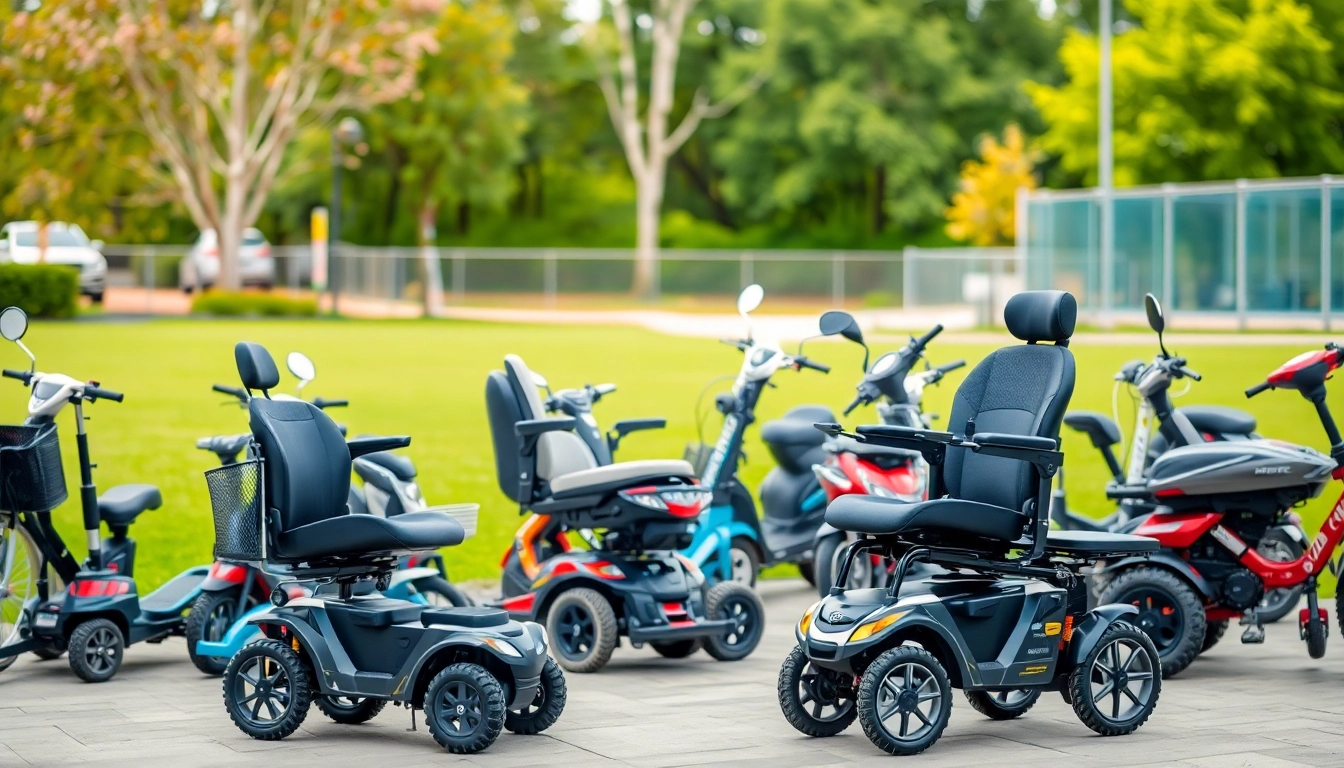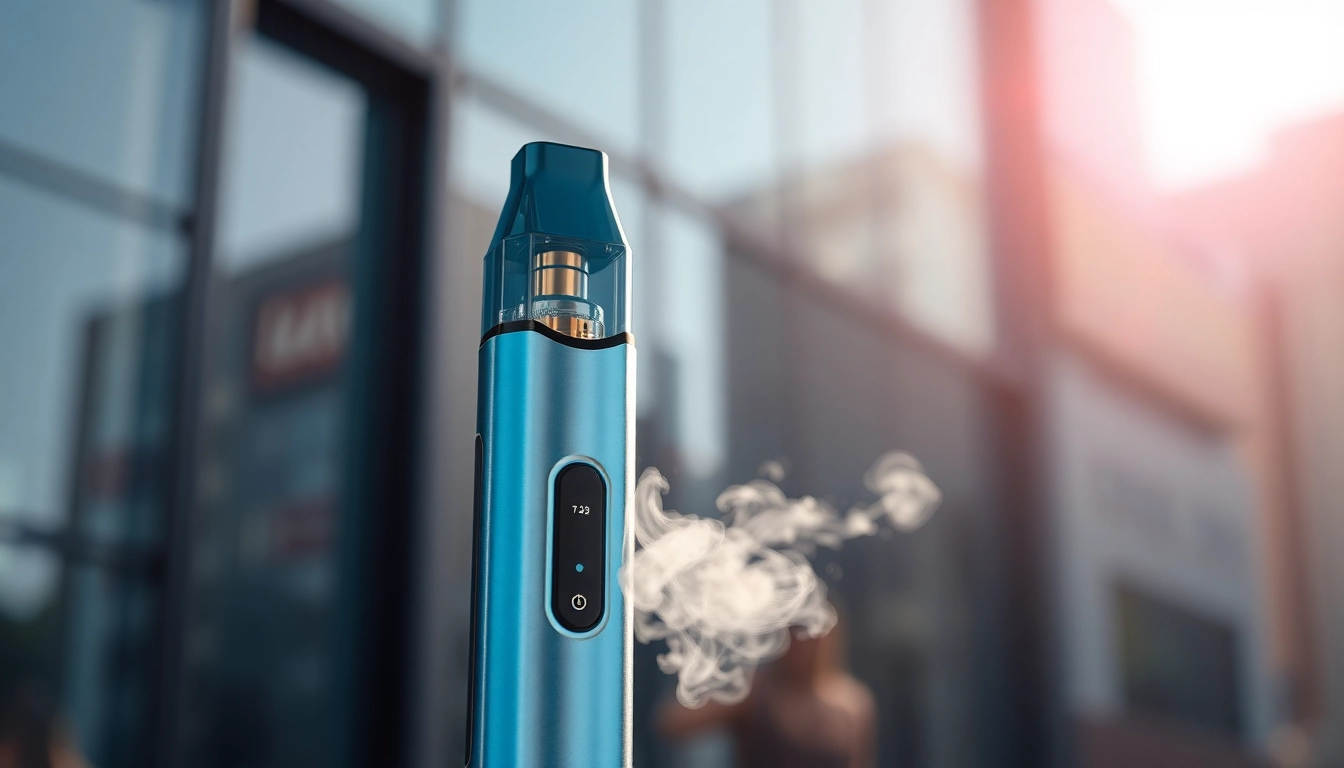
Understanding Mobility Equipment and Its Benefits
What is Mobility Equipment?
Mobility equipment refers to a wide range of devices designed to assist individuals in moving more freely and confidently. This can include wheelchairs, scooters, walkers, canes, and lifts, among others. The primary goal of this equipment is to enhance the user’s ability to navigate their environment, whether it’s indoors or outdoors, providing them with greater independence. It plays a crucial role for people with disabilities, seniors, or individuals recovering from surgeries and health conditions.
The evolution of mobility equipment has been significant, moving from heavy and cumbersome products to lighter, more sophisticated technologies that better meet user needs. Notably, many modern devices incorporate ergonomic designs and advanced materials that facilitate ease of use and comfort. They can be manually operated or powered, catering to different levels of mobility and personal preferences.
The Importance of Mobility for Independence
Mobility is a fundamental aspect of human autonomy. For many, losing the ability to move independently can lead to emotional distress, loss of dignity, and reduced quality of life. Having access to appropriate mobility equipment can significantly enhance a person’s self-sufficiency and confidence. It enables users to engage in daily activities such as shopping, socializing, and participating in hobbies, thereby fostering a sense of community and belonging.
Moreover, mobility contributes to physical health. Regular movement can reduce the risk of chronic diseases like obesity, diabetes, and heart conditions. Therefore, providing individuals the means to maintain their mobility not only supports mental wellbeing but also promotes better physical health.
Types of Mobility Equipment Available
There is a diverse array of mobility equipment designed to cater to various needs:
- Wheelchairs: Both manual and electric versions are available, allowing users to choose based on their mobility levels and preferences.
- Scooters: Ideal for outdoor use, mobility scooters offer an alternative for those who can’t walk long distances.
- Walkers: These are designed for those who need support while walking, improving stability and confidence.
- Canes and Crutches: Useful for individuals who require minimal support and prefer a more portable option.
- Lifts and Ramps: Assistive devices that help individuals navigate stairs or uneven surfaces.
Each type serves specific purposes and can significantly improve mobility, safety, and overall quality of life for users.
Choosing the Right Mobility Equipment for Your Needs
Assessing Personal Requirements and Preferences
When selecting mobility equipment, it is essential to evaluate individual needs carefully. Considerations include the level of mobility impairment, frequency of use, typical environments (indoors, outdoors, or both), and personal style preferences. Consultation with healthcare professionals can also provide invaluable insights into the types of equipment that would best suit an individual’s condition.
One practical approach is to conduct an assessment that encompasses:
- Physical capabilities and limitations
- Everyday activities and their demands
- Environment layout (home, workplace)
- Personal comfort and aesthetic preferences
Additionally, engaging family members in the decision-making process can lead to a more comprehensive understanding of the user’s needs and preferences.
Comparing Mobility Equipment Options
Once personal requirements are established, the next step is to compare available options. When looking at different types of mobility equipment, individuals should consider several factors:
- Functionality: Focus on how well the equipment fulfills the specific needs determined earlier.
- Size and Weight: Ensure the selected equipment is manageable and appropriate for the user’s strength and living situation.
- Portability: If travel is frequent, lightweight and foldable options may be more suitable.
- Price: A budget should be established, but it’s crucial to weigh cost against functionality and quality.
- Warranty and Support: Review warranty options and manufacturer support post-purchase to ensure long-term reliability.
Engaging with suppliers and conducting research through reviews and product comparisons can help simplify this selection process.
Top Features to Look for in Mobility Equipment
When narrowing down your options, it’s important to consider key features that enhance usability and comfort:
- Adjustability: Features like adjustable seat height, armrests, and backrests can greatly improve comfort.
- Safety Features: Items such as anti-tip wheels, footrests, and brakes are critical for user safety.
- Batteries or Power Supply: For electric devices, check battery life and recharging options to ensure they meet your daily travel needs.
- Durability: Materials should be high-quality to withstand daily wear and tear.
- Ease of Use: Equipment should be intuitive, allowing users to operate them without assistance.
A well-informed decision will ultimately lead to enhanced independence and quality of life.
Mobility Equipment Maintenance and Care
Essential Maintenance Practices
To ensure the longevity and effectiveness of mobility equipment, proper maintenance is vital. Regular upkeep can prevent breakdowns and maximize performance. Key maintenance practices include:
- Routine Inspections: Regular checks for any signs of wear, tear, or damage can help address issues before they worsen.
- Cleaning: Routine cleaning helps prevent dirt buildup, which can affect functionality.
- Tightening Bolts and Connections: After a period of use, bolts and screws can loosen, leading to safety issues. Regularly checking and tightening them is essential.
- Battery Maintenance: For electric mobility devices, following guidelines for battery care can prevent performance issues.
Establishing a maintenance schedule can greatly contribute to the equipment’s reliability and the user’s welfare.
Common Issues and Troubleshooting Tips
Despite best practices in maintenance, users may still encounter issues. Here are some common problems and troubleshooting tips:
- Equipment Not Moving: Check if the battery is charged and if all connections are secure.
- Squeaky Wheel or Joint: Apply lubricants as per manufacturer’s guidelines to reduce friction and noise.
- Excessive Vibrations or Rough Operation: Inspect tire conditions and ensure they are correctly inflated.
- Mechanical Failures: Familiarize yourself with the equipment’s manual. If the issue persists, consulting a professional may be necessary.
By being proactive in troubleshooting, users can often resolve minor issues quickly and efficiently.
When to Consult a Professional
While self-maintenance is important, there are times when professional intervention is necessary. Consider consulting a technician in situations such as:
- Frequent breakdowns or persistent issues that do not resolve through basic troubleshooting.
- Complex repairs that require specialized tools or expertise beyond the user’s capabilities.
- After significant falls or accidents, to ensure the equipment has not sustained hidden damages.
Regular professional check-ups can also give peace of mind, ensuring equipment is in peak condition and safe for use.
Innovative Trends in Mobility Equipment
Technological Advances Shaping Mobility Equipment
Technology plays a pivotal role in revolutionizing mobility equipment. Recent trends show an increase in smart technologies being integrated into mobility devices. Features such as GPS for navigation, app connectivity for tracking performance, and even rechargeable batteries with longer durations are becoming commonplace. Mobility devices equipped with sensors can detect hazards, alert caregivers, and even guide users in their navigational path.
Moreover, the development of lightweight materials has led to portable and easy-to-use devices that do not compromise on strength or durability. These innovations serve to enhance user safety and convenience, significantly improving the overall experience.
Personalization and Customization Trends
Another noteworthy trend in the field is the increasing demand for personalized mobility solutions. Manufacturers are embracing the idea of customizing equipment based on individual needs, preferences, and lifestyle. This can range from adjustable seats to bespoke color options that allow users to express their personality.
Additionally, bespoke fittings are now available for individuals with unique requirements, ensuring maximum comfort and functionality. By tailoring mobility solutions to suit each user personally, companies are fostering better user satisfaction and improved usability.
Future of Mobility Equipment and User Experience
The future of mobility equipment appears promising and more user-centric. Trends suggest an expected integration of artificial intelligence in mobility devices, facilitating enhanced usability and safety features. Users can look forward to increased automation in mobility devices, offering a level of independence and smart orchestration that aligns better with their lifestyle.
Furthermore, a strong focus on user experience will continue driving innovations, pushing manufacturers to prioritize comfort and aesthetics alongside functionality. This holistic approach guarantees that as demand evolves, mobility equipment will adapt, ensuring inclusivity and enhanced quality of life for its users.
Finding Reliable Suppliers and Resources for Mobility Equipment
Evaluating Mobility Equipment Suppliers
Choosing the right supplier for mobility equipment is just as critical as selecting the right device. Prospective buyers should evaluate suppliers by considering various factors:
- Reputation: Check reviews, testimonials, and ratings from other customers to gauge supplier reliability.
- Product Range: A supplier offering a diverse selection of equipment gives more options to find the right fit.
- Customer Support: Evaluate the quality of customer service provided — it’s important to have accessible support post-purchase for maintenance or troubleshooting.
- After-Sales Service: Look into warranty options and return policies to ensure you are protected against faulty products.
Ultimately, the right supplier should prioritize customer satisfaction and ensure users receive the best solutions for their mobility needs.
Online Resources for Research and Reviews
The internet is filled with valuable resources for those seeking information about mobility equipment. Various websites provide product reviews, comparison tools, and user discussions that can inform purchasing decisions. Reputable forums and social media groups can also offer user experiences and recommendations that potential buyers can learn from.
It’s wise to explore professional review sites, blogs dedicated to assistive technologies and even consult multiple forums to gather diverse viewpoints. This thorough approach will build confidence in your decision-making process.
Community Recommendations and Support Networks
Joining support networks and engaging with community groups can empower individuals seeking mobility solutions. Local chapters of health organizations, accessible community centers, or online groups often facilitate exchanges of advice and recommendations. Engaging with others who share similar experiences can provide valuable insights into effective products and solutions tailored to meet specific needs.
Community support not only provides access to resources but can also foster connections, mutual support, and the sharing of innovative ideas that enhance mobility and independence for users.








